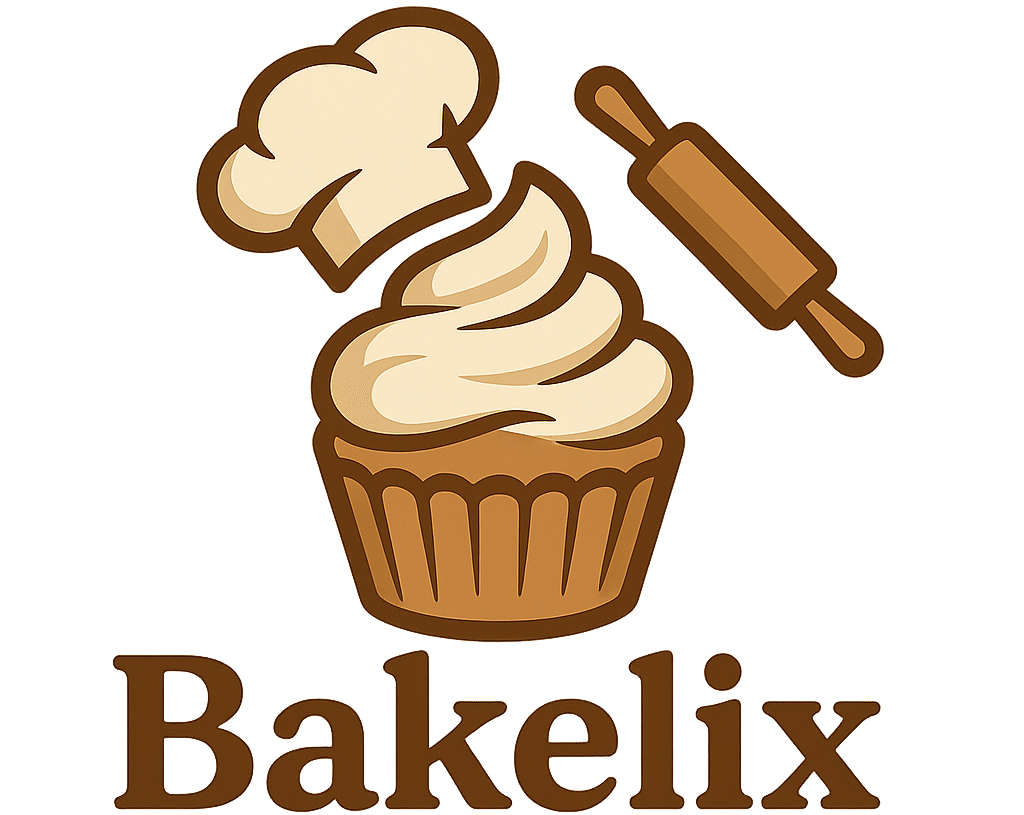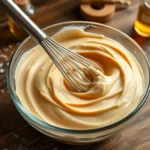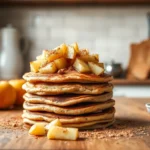There’s something magical about the way buttermilk transforms an ordinary pound cake into pure perfection. We’ve discovered that this tangy ingredient doesn’t just add moisture – it creates the most incredible tender crumb while balancing sweetness with subtle acidity that keeps you coming back for more.
Traditional pound cake recipes called for a pound each of butter, sugar, eggs, and flour. But we’ve elevated this classic with buttermilk’s secret power to create a cake that’s impossibly moist yet still holds its beautiful dense structure. The slight tang cuts through the richness beautifully, making each slice feel lighter than you’d expect.
Whether you’re serving it plain with morning coffee, dressed up with fresh berries, or toasted for an indulgent dessert, this buttermilk pound cake delivers every single time. We’ll show you exactly how to achieve that perfect golden crust and velvety interior that makes this recipe absolutely irresistible.
Ingredients
We gather our ingredients in the order they appear in our recipe to ensure smooth preparation and perfect results.
For the Cake:
- 1 cup (2 sticks) unsalted butter, room temperature
- 3 cups granulated sugar
- 5 large eggs, room temperature
- 3 cups all-purpose flour
- 1/2 teaspoon baking soda
- 1/2 teaspoon salt
- 1 cup buttermilk, room temperature
- 1 teaspoon vanilla extract
- 1/2 teaspoon almond extract
For the Glaze (Optional):
- 1 1/2 cups powdered sugar
- 3-4 tablespoons buttermilk
- 1/2 teaspoon vanilla extract
Room temperature ingredients blend more easily and create our desired smooth batter texture. We recommend removing eggs and buttermilk from the refrigerator 30 minutes before baking. The butter should yield slightly to gentle pressure when properly softened.
Our flour measurement works best when we spoon it into measuring cups and level with a knife rather than scooping directly from the container. This prevents dense results from packed flour. Fresh baking soda ensures proper lift and helps activate the buttermilk’s acidity for our tender crumb.
Quality vanilla and almond extracts enhance the cake’s flavor profile without overwhelming the delicate buttermilk tang. We prefer pure extracts over artificial versions for their superior taste and aroma.
Equipment Needed

Creating the perfect buttermilk pound cake requires exact tools that ensure optimal results. We recommend gathering these essential items before starting your baking process to achieve the moist, tender texture this classic dessert is known for.
Essential Baking Equipment
A 10 cup non-stick bundt pan stands as the standard vessel for buttermilk pound cake due to its ideal shape and size. This specialized pan creates the traditional pound cake silhouette while ensuring even heat distribution throughout the baking process.
We strongly recommend using cooking spray with added flour such as Baker’s Joy to prevent sticking and guarantee easy cake removal from the pan. This preparation step proves crucial for maintaining the cake’s beautiful presentation.
Mixing and Measuring Tools
Your stand mixer or electric hand mixer becomes indispensable for creaming butter and sugar properly. This equipment ensures the light, fluffy texture that creates our cake’s signature fine crumb structure.
Accurate measuring tools including cups and spoons ensure precise ingredient portioning for consistent results. We also suggest keeping a liquid measuring cup specifically for buttermilk and other wet ingredients to maintain accuracy.
A rubber spatula helps scrape batter thoroughly and fold ingredients without overmixing. This tool prevents the dense texture that can result from improper mixing techniques.
Additional Helpful Items
| Equipment | Purpose | Optional/Essential |
|---|---|---|
| Cooling rack | Even cooling after baking | Essential |
| Sifter | Fine, lump-free dry ingredients | Optional |
| Toothpicks or cake tester | Check for doneness | Essential |
| Cake carrier | Storage and transport | Optional |
A cooling rack allows proper air circulation around the finished cake, preventing soggy bottoms and ensuring even cooling. Toothpicks or a cake tester help determine the perfect moment when your buttermilk pound cake reaches ideal doneness.
Optional equipment like a sifter can create an even finer texture by eliminating lumps from dry ingredients, while a cake carrier provides convenient storage and transport for your finished creation.
Prep Instructions
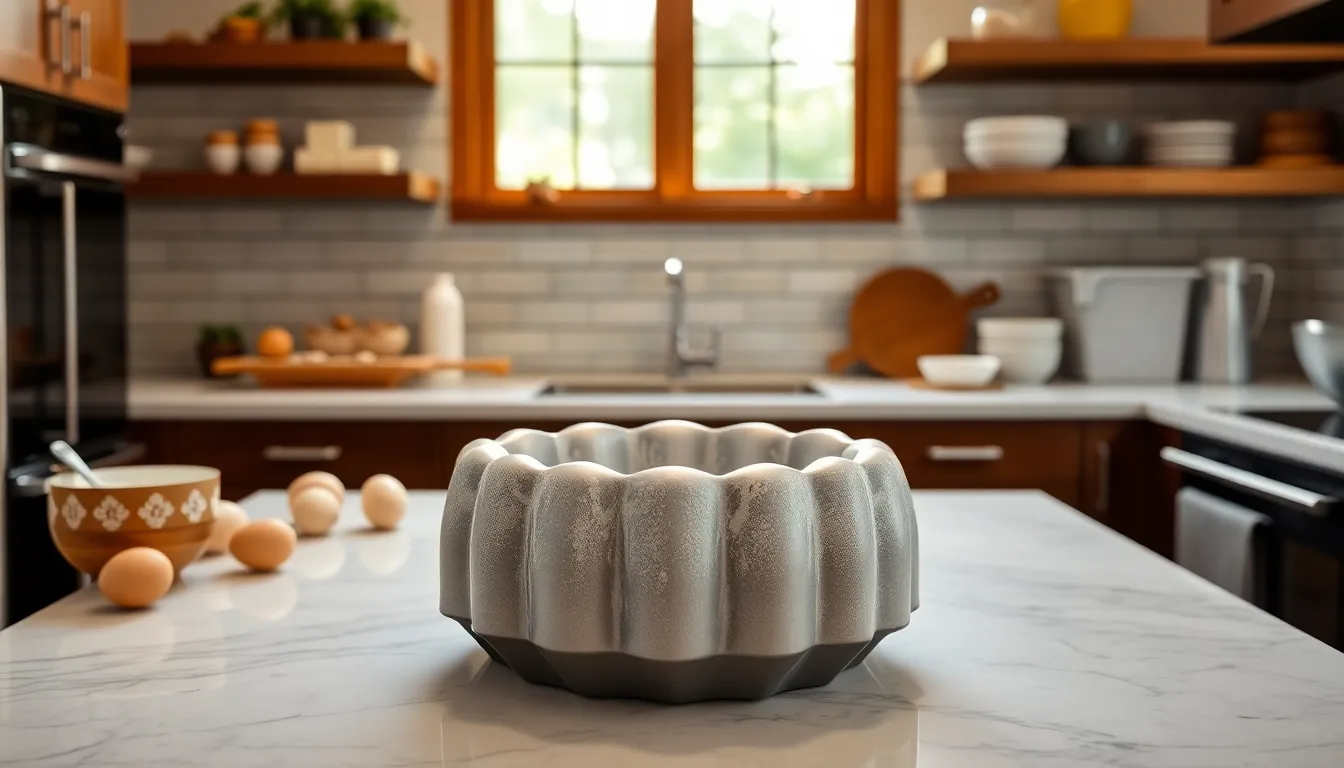
Proper preparation sets the foundation for our perfect buttermilk pound cake. These essential steps ensure smooth mixing and even baking throughout.
Preparing Your Pan
We start by selecting our 10 to 12-cup bundt pan or 10-inch tube pan for optimal results. Generously grease every crevice and curve with butter or cooking spray, paying special attention to the intricate details of bundt pans where batter tends to stick.
Next, we dust the greased pan thoroughly with all-purpose flour, tapping out any excess. This double protection method creates a barrier that guarantees our cake releases cleanly from the pan. For extra insurance, we can use a cooking spray that already contains flour for even coverage.
The pan preparation must be completed before we begin mixing our batter. Once our ingredients are combined, we need to transfer the mixture immediately to prevent the leavening agents from losing their effectiveness.
Room Temperature Ingredients
We bring our butter, eggs, and buttermilk to room temperature at least 2 hours before baking begins. Room temperature butter creams more effectively with sugar, creating the light and fluffy base our pound cake requires.
Cold eggs can cause our butter mixture to seize and become lumpy, preventing proper incorporation. We test egg temperature by gently touching them with our palm – they should feel neither warm nor cold.
Buttermilk at room temperature blends seamlessly into our batter without shocking the creamed butter mixture. Cold buttermilk can cause the fat to solidify and create an uneven texture in our finished cake.
For faster warming, we place eggs in a bowl of warm water for 10 minutes and measure buttermilk into a microwave-safe container, warming it for 20-30 seconds. The butter should yield slightly to gentle pressure when properly tempered.
Directions
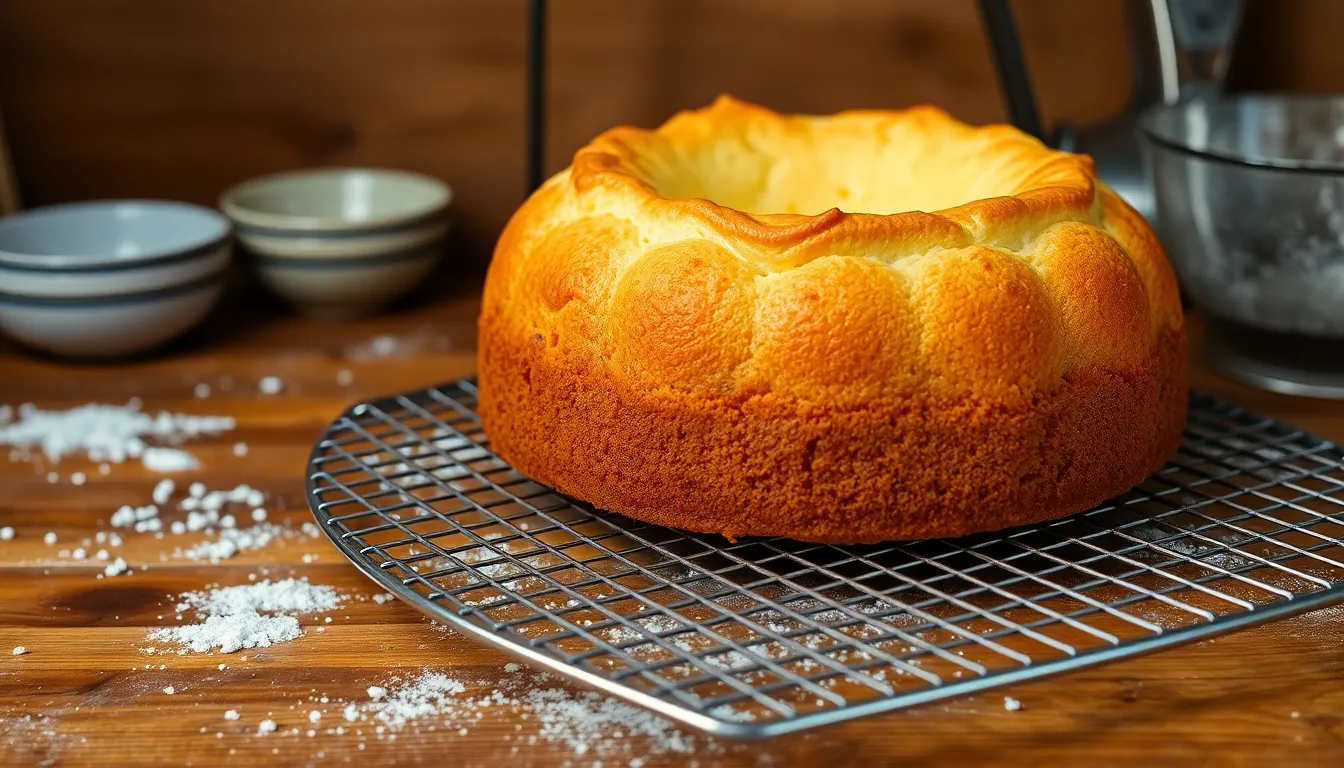
Now we transform our carefully measured ingredients into the moist and tender buttermilk pound cake that makes this recipe so beloved. Follow these detailed steps to achieve that perfect golden crust and velvety interior.
Making the Batter
We begin by creaming the room temperature butter and granulated sugar in our stand mixer bowl using the paddle attachment. Beat these ingredients on medium speed for 4 to 5 minutes until the mixture becomes light and fluffy with a pale yellow color.
Add eggs one at a time to the creamed butter mixture. Beat well after each addition to ensure complete incorporation before adding the next egg. This gradual process prevents the batter from curdling and creates a smooth foundation.
Combine the all-purpose flour, salt, and baking soda in a separate mixing bowl. Whisk these dry ingredients together to distribute the leavening agent evenly throughout the flour.
We alternate adding the dry ingredients and buttermilk to our butter mixture in three additions. Start with one third of the flour mixture and beat on low speed until just combined. Pour in half of the buttermilk and mix until incorporated. Add another third of the flour mixture followed by the remaining buttermilk. Finish with the final portion of flour mixture and beat until the batter is smooth.
Stir in the vanilla extract and almond extract if using. Mix just until the extracts are evenly distributed throughout the batter without overworking.
Baking the Cake
Preheat your oven to 325°F while preparing the batter. This lower temperature ensures even baking and prevents the exterior from browning too quickly.
Pour the batter into your prepared 10 to 12-cup bundt pan. Spread the batter evenly and gently tap the pan on the counter to release any air bubbles.
Place the pan on the center rack of your preheated oven. Bake for 1 hour and 15 minutes or until a toothpick inserted into the center comes out clean or with just a few moist crumbs.
Check the cake’s doneness by inserting a long toothpick or cake tester into the thickest part of the cake. The cake is ready when the tester comes out without wet batter clinging to it.
Cooling Process
Remove the cake from the oven and place it on a wire cooling rack. Allow the cake to cool in the pan for exactly 30 minutes. This resting period lets the cake firm up slightly while still warm enough to release from the pan.
Run a thin knife around the edges of the bundt pan to loosen any areas that might stick. Place a cooling rack over the top of the pan and quickly invert both the pan and rack together.
Gently lift the bundt pan away from the cake. The cake should release cleanly onto the cooling rack. Let the cake cool completely on the rack for at least 2 hours before glazing or serving.
Store the completely cooled cake covered at room temperature where it will stay fresh for up to one week.
Storage Instructions
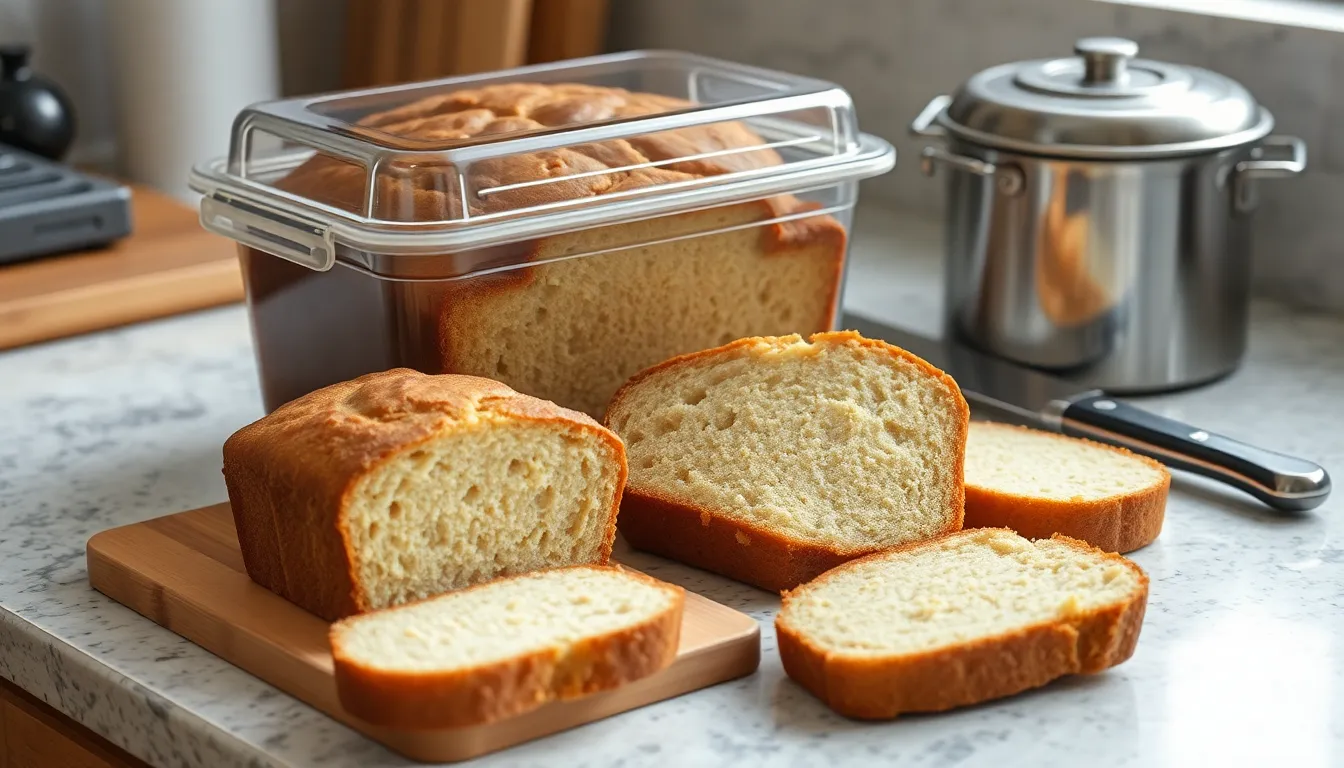
We recommend storing your buttermilk pound cake properly to maintain its moist texture and rich flavor for days or even months. Our storage approach depends on how quickly you plan to enjoy this delectable treat.
Room Temperature Storage
We store our completely cooled buttermilk pound cake in an airtight container at room temperature for optimal freshness. The cake maintains its perfect texture and flavor for up to 5 days when stored this way. Some bakers prefer consuming the cake within 3 days for peak quality.
| Storage Method | Duration | Temperature |
|---|---|---|
| Airtight container | 3-5 days | Room temperature |
| Refrigerated | 1 week | 35-40°F |
| Frozen (whole cake) | 3 months | 0°F |
| Frozen (sliced) | 3 months | 0°F |
Refrigeration
We refrigerate our buttermilk pound cake when we need extended storage beyond the room temperature timeframe. The cake stays fresh in the refrigerator for up to 1 week when properly wrapped or stored in an airtight container.
Freezing
We wrap our buttermilk pound cake tightly in plastic wrap for freezer storage to prevent freezer burn and maintain moisture. After wrapping in plastic we place the cake in aluminum foil or a freezer bag for additional protection. Our frozen buttermilk pound cake maintains its quality for up to 3 months in the freezer.
We thaw frozen cake by letting it sit at room temperature for several hours before serving. Individual slices can be frozen separately for convenient single servings that thaw more quickly than whole cakes.
Storage Tips
We ensure our cake is completely cooled before wrapping or storing to prevent condensation that could make the cake soggy. Well wrapped storage prevents the cake from drying out and maintains that signature moist crumb we love in buttermilk pound cake. We find that freezing individual slices makes it easier to enjoy a perfect portion whenever cravings strike.
Serving Suggestions
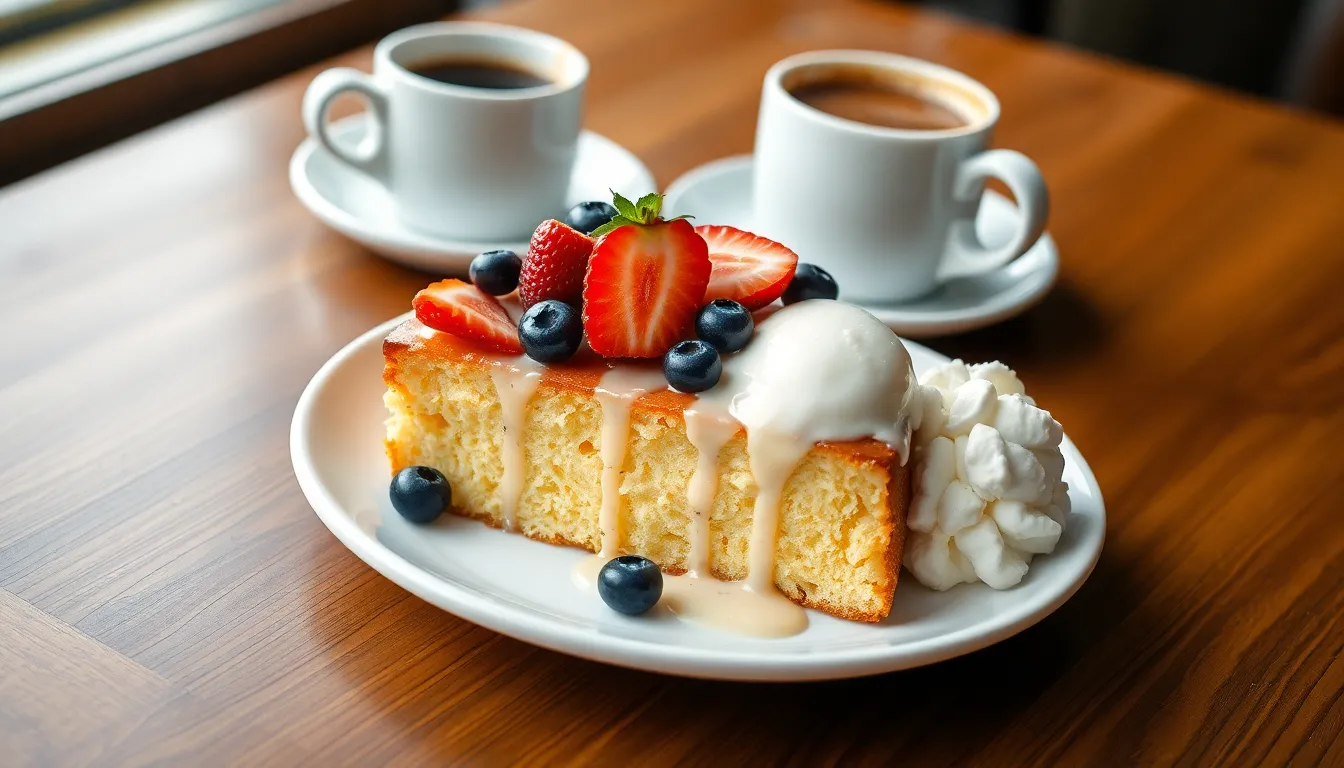
We believe buttermilk pound cake shines brightest when paired with complementary flavors that enhance its rich, tangy profile. Fresh berries create a delightful contrast with their natural sweetness and vibrant acidity. Strawberries and blueberries work particularly well, as their juicy texture balances the cake’s dense crumb while adding beautiful color to your presentation.
Ice cream transforms this classic dessert into an indulgent treat perfect for special occasions. Vanilla ice cream allows the buttermilk’s subtle tang to take center stage, while strawberry ice cream amplifies the berry notes. We recommend serving slightly warmed cake slices with a generous scoop for the ultimate comfort dessert experience.
Coffee and tea pairings elevate buttermilk pound cake to sophisticated snack status. The cake’s rich buttery flavor complements the bitter notes in coffee, while its moisture prevents the dry mouth feeling often associated with baked goods. Afternoon tea service becomes elegant when featuring thick slices alongside your favorite hot beverage.
Lemon glaze adds a bright, citrusy finish that cuts through the cake’s richness without overwhelming its delicate buttermilk flavor. We suggest drizzling the glaze while the cake remains slightly warm, allowing it to soak into the surface for maximum flavor penetration. This optional topping creates a sweet and tangy combination that appeals to those seeking extra indulgence.
Toasted slices offer a completely different texture experience while maintaining the cake’s signature moistness. Light toasting creates a golden exterior that contrasts beautifully with the tender interior, making each bite more interesting and complex.
Recipe Variations

Transforming our classic buttermilk pound cake into new flavor profiles opens endless possibilities for customization. These variations maintain the signature moisture and tang while introducing exciting new taste dimensions.
Lemon Buttermilk Pound Cake
We elevate our basic recipe by incorporating bright citrus notes that complement the tangy buttermilk beautifully. Add 2 tablespoons of fresh lemon zest and 1 teaspoon of lemon extract to the batter along with the vanilla extract. The lemon zest should be mixed with the dry ingredients to distribute evenly throughout the cake.
Replace 2 tablespoons of the buttermilk with fresh lemon juice for an extra burst of citrus flavor. This substitution enhances the cake’s natural acidity while maintaining the proper liquid ratio. The lemon juice works harmoniously with the buttermilk to create a tender crumb with pronounced citrus undertones.
For the finishing touch we recommend preparing a lemon glaze using 1 cup of confectioner’s sugar mixed with 3 tablespoons of fresh lemon juice. Drizzle this glaze over the completely cooled cake allowing it to cascade down the sides for both visual appeal and additional lemon intensity.
Vanilla Bean Buttermilk Pound Cake
Our vanilla bean variation transforms the classic recipe into an aromatic masterpiece with deep vanilla complexity. Split one whole vanilla bean lengthwise and scrape the seeds directly into the creamed butter and sugar mixture. The tiny black specks distribute throughout the batter creating visual interest and intense vanilla flavor.
Increase the vanilla extract to 2 teaspoons when using vanilla bean seeds to amplify the vanilla profile without overwhelming the buttermilk’s characteristic tang. Some bakers prefer adding 1/4 teaspoon of almond extract alongside the vanilla for an additional layer of flavor depth that enhances rather than competes with the primary vanilla notes.
The vanilla bean pods should not be discarded after scraping. Place them in your sugar container to infuse future baking projects with residual vanilla essence. This vanilla bean variation pairs exceptionally well with fresh berries or a simple dusting of powdered sugar for an elegant presentation.
Troubleshooting Tips
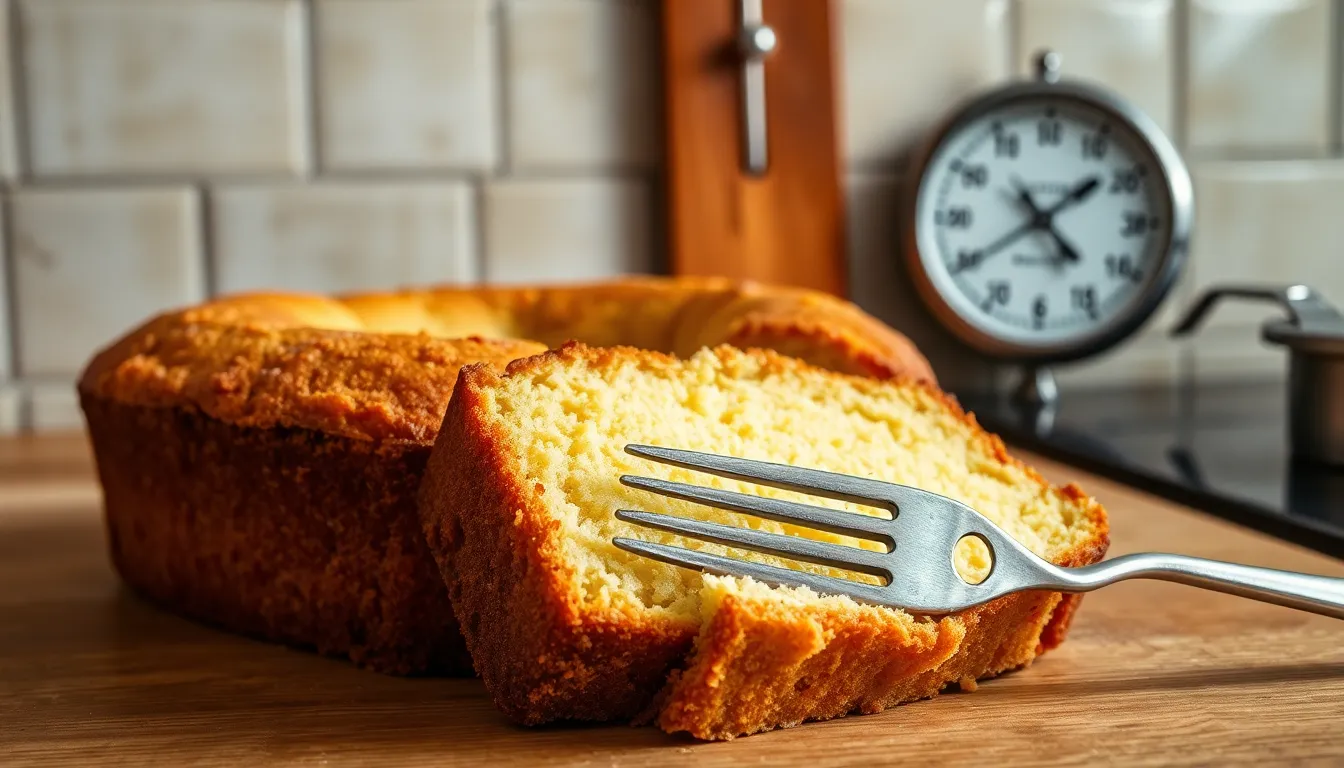
Even the most experienced bakers encounter challenges when making buttermilk pound cake. We’ve compiled answers for the most common issues to help you achieve perfect results every time.
Dense and Heavy Texture
A dense cake typically results from insufficient butter whipping or cold ingredients. We recommend beating your butter for a full 1 to 7 minutes to properly incorporate air into the mixture. High-quality unsalted butter makes a important difference in achieving the light texture you want. Room temperature ingredients blend more easily and create a smoother batter that produces better results.
Uneven Baking and Crumbling Top
When your cake develops a crumbly top crust or bakes unevenly, oven temperature inconsistencies are usually the culprit. We suggest rotating your cake halfway through the baking process to ensure even heat distribution. Check your oven for cold spots that might affect how your cake bakes. An oven thermometer helps verify that your actual temperature matches the setting.
Sunken or Fallen Cake
Overmixing the batter creates too much gluten development, which can cause your cake to fall during or after baking. We advise mixing just until ingredients combine to maintain the tender crumb. Incorrect oven temperatures also contribute to sinking, so use a reliable thermometer for accuracy. Resist opening the oven door frequently during baking, as temperature fluctuations disrupt the cake’s structure.
Air Pockets and Splitting
Air bubbles trapped in the batter create unsightly pockets and cause the cake to split on top. We recommend gently tapping your filled bundt pan on the counter before placing it in the oven. This simple step releases trapped air and promotes even baking throughout the cake.
Overcooking Issues
Buttermilk pound cake can go from perfectly baked to overdone in just a few minutes. We monitor our cakes closely during the final stages of baking, as timing varies between different ovens and pan sizes. Make note of the optimal baking time for your exact equipment to achieve consistent results. A toothpick inserted into the center should come out with just a few moist crumbs for the perfect doneness.
| Issue | Primary Cause | Solution Time |
|---|---|---|
| Dense texture | Insufficient butter whipping | 1-7 minutes beating time |
| Uneven baking | Temperature inconsistencies | Rotate cake halfway through |
| Fallen cake | Overmixing or temp issues | Mix just until combined |
| Air pockets | Trapped air bubbles | Tap pan before baking |
| Overcooking | Timing variations | Monitor closely final stages |
Make-Ahead Instructions
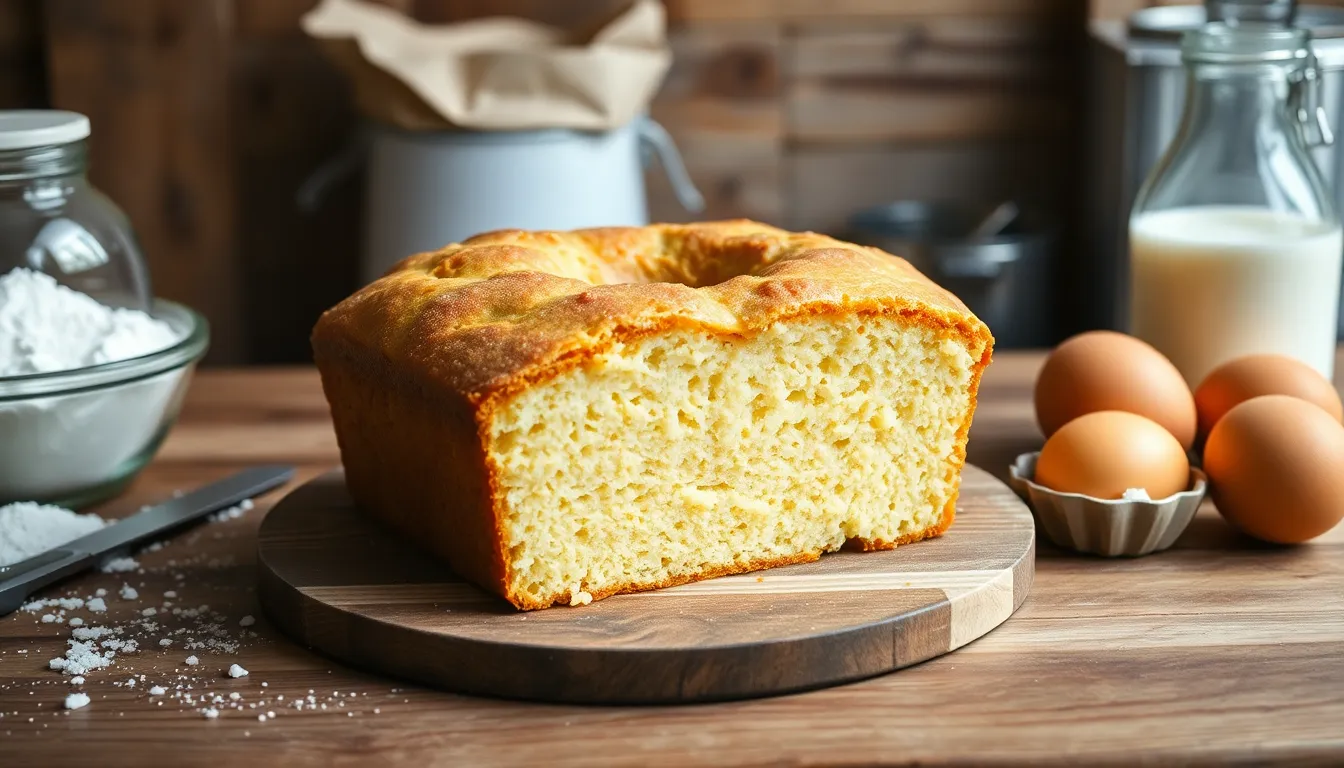
Planning ahead transforms this buttermilk pound cake into the perfect dessert for entertaining or busy schedules. We recommend preparing the batter up to 24 hours in advance for maximum convenience without compromising the cake’s signature texture and flavor.
Advance Batter Preparation
We can mix the entire batter a day before baking and store it covered in the refrigerator. The cold batter actually benefits from this resting period as the flour fully hydrates and the flavors meld together beautifully. Before baking, we allow the chilled batter to come to room temperature for about 30 minutes, which ensures even baking and proper rise.
Fully Baked Storage Options
Once our buttermilk pound cake cools completely, we have several storage methods that maintain its moist crumb and rich flavor. Room temperature storage works perfectly for cakes we plan to serve within 2 to 3 days. We wrap the cooled cake tightly in plastic wrap, then place it in an airtight container to prevent moisture loss.
For longer storage, we refrigerate the wrapped cake for up to one week. The buttermilk’s natural acidity acts as a preservative, helping maintain freshness longer than traditional pound cakes. We always bring refrigerated cake to room temperature before serving to restore its tender texture.
Freezing for Extended Storage
Freezing extends our buttermilk pound cake’s life up to three months without quality loss. We double wrap the completely cooled cake in plastic wrap, then aluminum foil, creating an airtight seal that prevents freezer burn. Individual slice wrapping allows us to thaw only the portions we need.
Proper Thawing Techniques
We thaw frozen whole cakes by transferring them to the refrigerator overnight, then allowing them to reach room temperature for optimal serving texture. Individual frozen slices thaw within 30 minutes at room temperature, making them perfect for impromptu dessert cravings. We avoid using microwaves for thawing as they can create uneven heating and compromise the cake’s delicate crumb structure.
Conclusion
We’ve shared everything you need to create a bakery-quality buttermilk pound cake that’ll become your go-to dessert recipe. From proper ingredient preparation to troubleshooting common issues this guide ensures your success every time.
The beauty of this cake lies in its versatility – whether you’re serving it plain with morning coffee or dressing it up with fresh berries for a dinner party. The make-ahead options and storage tips mean you can always have this delicious treat ready when cravings strike.
Now it’s time to preheat that oven and experience the magic of buttermilk pound cake for yourself. We’re confident this recipe will earn a permanent spot in your baking repertoire.
Frequently Asked Questions
What makes buttermilk pound cake different from regular pound cake?
Buttermilk adds moisture and creates a tender crumb while contributing subtle acidity that balances the cake’s sweetness. Unlike traditional pound cake, buttermilk pound cake maintains the dense structure but with enhanced moisture and a slight tangy flavor that elevates the overall taste profile.
How long can I store buttermilk pound cake?
Store the cooled cake in an airtight container at room temperature for up to 5 days, refrigerate for up to 1 week, or freeze for up to 3 months. Proper wrapping prevents moisture loss and maintains the cake’s rich texture and flavor.
Can I make the batter ahead of time?
Yes, you can prepare the batter up to 24 hours in advance. Chilling allows the flour to hydrate and flavors to meld. Bring the batter to room temperature before baking to ensure proper texture and even cooking throughout the cake.
What’s the best way to serve buttermilk pound cake?
Serve plain with coffee, topped with fresh berries like strawberries or blueberries, or with vanilla ice cream. You can also toast slices for a different texture, add a lemon glaze for brightness, or dust with powdered sugar for elegant presentation.
Why is my buttermilk pound cake dense or dry?
Dense texture usually results from overpacked flour, cold ingredients, or insufficient butter whipping. Ensure all ingredients are at room temperature, measure flour correctly by spooning and leveling, and cream butter thoroughly until light and fluffy for optimal results.
What equipment do I need to make buttermilk pound cake?
Essential equipment includes a 10-cup non-stick bundt pan, stand mixer or electric hand mixer, accurate measuring cups and spoons, and a wire cooling rack. Proper equipment ensures even baking and professional-looking results every time you make this cake.
Can I freeze individual slices of buttermilk pound cake?
Yes, freezing individual slices allows for convenient portion control. Wrap each slice tightly in plastic wrap, then place in freezer bags. Thaw at room temperature for 30-60 minutes, avoiding microwaving to preserve the cake’s delicate crumb structure.
What are some popular variations of buttermilk pound cake?
Popular variations include Lemon Buttermilk Pound Cake with lemon zest and extract, and Vanilla Bean Pound Cake using vanilla bean seeds. These variations maintain the signature moisture and tang while introducing complementary flavors that enhance the classic recipe.
